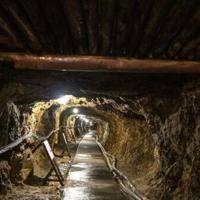A network of mines on a Japanese island known for using conscripted wartime labor has been added to UNESCO’s World Heritage register. The Sado gold and silver mines, which started operating in the 12th century and produced until after World War II, are now a popular tourist destination. Japan advocated for their World Heritage listing due to their long history and unique mining techniques that were different from European mines at the time.
Initially, South Korea opposed the proposal because of the involuntary Korean labor that was used during World War II when Japan occupied the Korean peninsula. However, South Korea has now agreed to the listing with the condition that Japan accurately reflects the “full history” of the Sado Gold Mine site.
The UNESCO committee meeting in New Delhi confirmed the listing after recognizing the archaeological significance of the mining activities and social organization at the site.
Japanese Prime Minister Fumio Kishida expressed joy at the inscription after a 14-year effort. Japan has pledged to preserve the memories of the laborers who worked under harsh conditions, including a higher percentage of Korean laborers engaging in dangerous tasks.
Historians acknowledge the discrimination and harsh conditions faced by Korean workers at the Sado mines. They were often allocated the most dangerous jobs and had to endure difficult working conditions compared to Japanese workers.
Aside from the Sado mines, other sites added to the World Heritage list this week include the Beijing Central Axis, burial mounds of the Ahom Dynasty in India, the Marquesas Islands in French Polynesia, and the Saint Hilarion complex in the Middle East.
The UNESCO committee meeting continues until Wednesday.
bur-tmo-gle/sn





